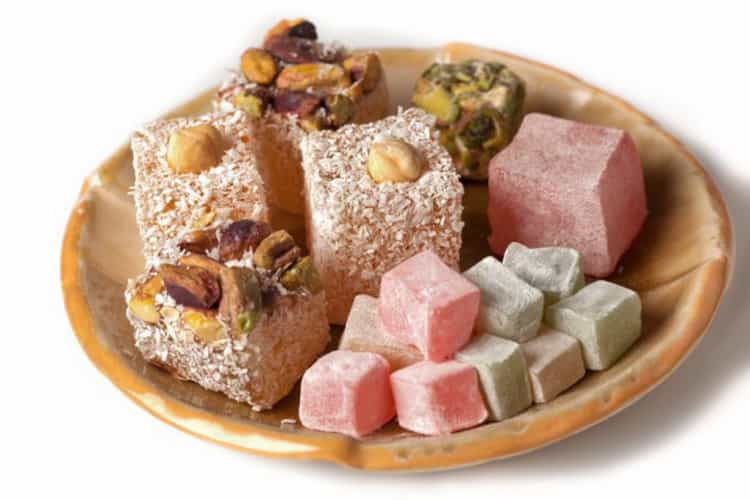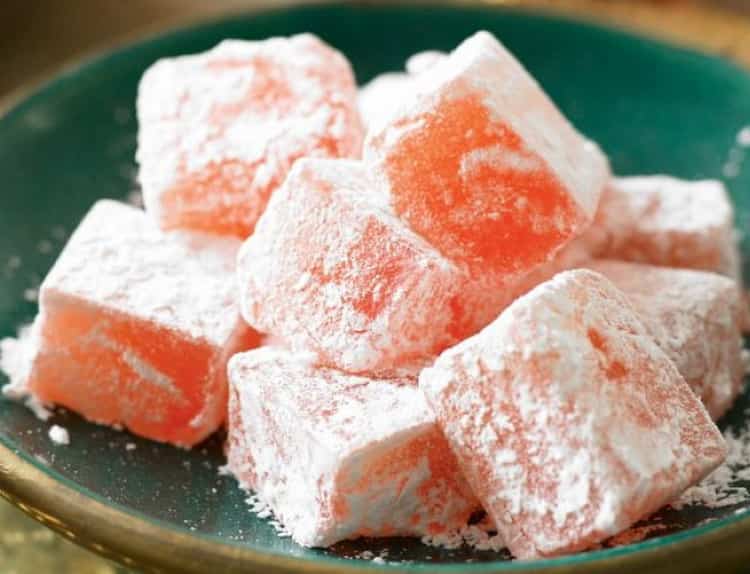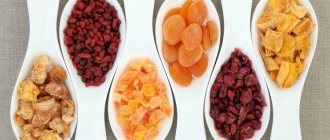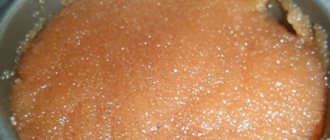Updated: December 23, 2020, at 09:52
- 7.1 Author of the publication
Our article today is dedicated to the oriental sweet Turkish Delight, which is undoubtedly well known to everyone. Let's talk about the calorie content, the content of proteins, fats, carbohydrates in the product, find out what it is made of, what factors influence the calorie content of Turkish delight, how you can prepare the delicacy at home, get acquainted with the nutritional value, find out what is good about the dessert for men and women .
Calorie content of Turkish delight
Turkish delight is a Turkish sweet that cannot be confused with others. Sold in pieces, rolls, sprinkled with coconut, powdered sugar, cinnamon, chocolate, poppy seeds, and has various flavors. Let's figure out what Turkish Turkish delight is made of, what its calorie content is in combination with hazelnuts, nuts and other additives, how many calories are contained in 1 piece of sweets.
This confectionery product is made from starch, sugar, water, it is very sweet and tasty. Our women will immediately ask whether its use will harm their figure. 100 grams of food contains approximately 320 kcal, 0.9 grams of protein, 0.8 grams of fat, and 79 grams of carbohydrates. This is the average.
The calorie content of Turkish delight will depend on the methods of its production and the components included in the composition. The dessert can be simply white, made from sugar, water, starch, or maybe pink - this is an infusion of a rose flower. There are fruit desserts that are based on fruit syrups. Walnuts, peanuts, pistachios, and hazelnuts are also used to produce Turkish delight, which also affect calorie content.
The product contains a large amount of glucose, so you should not consume it excessively, as your blood sugar level will rise.
The high calorie content makes it difficult to consume the treat during diets. You need to know that 1-2 pieces will not do much harm. Fruit delight prepared with figs is significantly lower in calories than with nuts, peanuts, in general, there is no definite answer.
It all depends on the amount of sugar and additives. Weight 1 pc. Turkish delight 10-15 grams, its calorie content ranges from 32 to 50 kilocalories, based on this you can calculate the calorie content of pieces of different types of dessert.
We provide a table of caloric content of various types of Turkish delight:
| types of Turkish delight | calorie content per 100 g, (kcal) | calorie content of 1 piece, (kcal) |
| regular white | 354,73 | 60, 3 |
| with hazelnuts | 386, 17 | 65,64 |
| with peanuts | 397, 20 | 67,52 |
| fruit | 410,8 | 69,8 |
| Turkish | 404 | 68,7 |
| pink | 331 | 56,3 |
| chocolate | 349 | 59,33 |
| Khazer Baba | 388 | 65,96 |
| carrot | 246 | 50, 11 |
| strawberry | 174 | 41,20 |
| with walnuts | 374,5 | 63,66 |

Benefits, harms, calorie content of Turkish delight per 100 grams
The total calorie content of Turkish delight per 100 grams is 320 kcal. 100 g of product contains:
- proteins – 0.9 g (3 kcal);
- fat – 0.8 g (7 kcal);
- carbohydrates – 79 g (310 kcal).
Due to the high content of honey and nuts in Turkish delight, the product is a source of vitamin E.
Calorie content of Turkish delight 1 pc.
Calorie content of Turkish delight 1 pc. depends on the weight of the sweet. The average weight of 1 piece of product is 10 - 15 g. Thus, the number of calories in one Turkish delight is approximately 32 - 48 kcal.
Calorie content of Turkish delight with nuts per 100 grams
Calorie content of Turkish delight with nuts per 100 grams is 340 kcal. 100 g of sweets contains 83.9 g of carbohydrates, 1 g of protein and 1 g of fat.
What are the benefits of Turkish delight?
When consumed in a balanced diet, Turkish delight benefits health and well-being. The product has the following beneficial properties:
- strengthens the immune system;
- activates the work of the heart and blood vessels;
- accelerates brain activity;
Interesting: Calorie content of honey in 1 teaspoon
- improves hair condition;
- helps to lift your mood;
- thanks to the addition of spices, it is an effective remedy in the fight against viruses and bacteria;
- if ginger is present in the composition, it ensures the removal of toxins, etc. from the body.
Harm of Turkish delight
Like other sweet foods, Turkish delight is high in calories and should be consumed in limited quantities. With uncontrolled use of the product in food, the following negative reactions are possible:
- extra pounds are quickly gained;
- metabolism slows down, including constipation and flatulence;
- the risk of diabetes increases;
Interesting: Calorie content of fried potatoes
- the production of gastrointestinal enzymes is disrupted;
- The concentration of sugar in the blood increases, which leads to high excitability, nervousness, etc.
Thus, Turkish delight is a product that should be eaten “wisely.” With a normalized amount of sweetness, consuming Turkish delight will only have a positive effect on the body.
Cooking Turkish delight at home
If you love Turkish delight, then you don’t have to go to the store to buy sweets. This delicacy can be easily prepared at home. The components of the sweet dish are:
- 1 250-milligram cup starch + small amount of starch for dusting;
- 260 ml of water (150 ml for preparing syrup and 110 ml for diluting starch);
- 200 g peach;
- 300 g sugar;
- 1 bag of roasted, peeled hazelnuts;
- 1 packet of vanilla sugar;
- 1 pinch of citric acid.
The cooking process includes the following steps:
Stage 1. Brewing syrup. 150 ml of water is poured into a 2-liter saucepan, sugar is poured into the water. Cook the mixture over medium heat until it begins to boil. In order for the sugar to dissolve well, the water must be stirred constantly.
Stage 2. After the boil begins, the pan is loosely covered with a lid, cooking the syrup continues for another 10 minutes, without stirring, over low heat, making sure that the mixture does not stop boiling.
Stage 3. At the same time, fruit puree is prepared. The peach prepared in advance is cleared of seeds and skins, crushed using a blender, and rubbed through a sieve. You should end up with 6 tbsp. spoons of pureed peach puree.
Stage 4. Cooked peach puree is added to the sugar syrup, which has already been boiled before boiling with stirring and 10 minutes after boiling without stirring under a loose lid. The mixture is stirred and cooked for another 10 minutes over medium heat. The main goal is to evaporate the water as much as possible and boil the resulting fruit syrup.
Stage 5. While the syrup is boiling, prepare the molds for laying out the Turkish delight. Suitable baking dishes are lined with cling film and sprinkled with starch on the bottom. Starch absorbs excess moisture, helping the sweetness to harden.
Stage 6. After preparing the molds, starch milk is made. To do this, a 250-milligram glass of starch is diluted with 110 ml of water. Mix the mixture with a whisk until smooth.
Stage 7. Pour the prepared starch milk into the sugar syrup in a thin stream. It is important to keep stirring the contents of the pan.
Stage 8. After this, the resulting mixture is whisked very quickly and forcefully. If you do everything slowly, the sweet mass will stick to the bottom of the pan.
Stage 9. When the whisk finally stops, the prepared Turkish delight is mixed with the fried nuts.
Stage 10. Cooking the resulting mixture continues until the Turkish delight can easily be rolled into balls with a wooden spatula, and also stops spreading due to the high temperature.
Stage 11. The finished dish is removed from the heat and placed in the previously prepared baking dish.
Stage 12. The sweetness is left to stand, covered with gauze, at room temperature for 13 hours.
Making Turkish delight is a complex process. To get the sweetness right, you will have to practice.
SUBSCRIBE TO SITE UPDATES
Copying materials from the article “Benefits, harms, calorie content of Turkish delight per 100 grams” is permitted provided that an active link to the Good Habits website is indicated.
goodprivychki.ru
What does Turkish Delight contain?
The nutritional value of one hundred grams of Turkish delight is as follows: 80.82 grams of carbohydrates, providing 30% of the daily requirement, proteins are 1.19 grams, which corresponds to 1%, 1.11 grams are fats, which is 1% of the required requirement. . 100 g of dessert with nuts has 0.7 g of protein, 0.8 g of fat, 79.4 g of carbohydrates.
Carrot delight has 4 g of protein, 15 g of fat, 28 g of carbohydrates, sweetness with hazelnuts contains 1.1 grams of protein, 3 grams of fat, 88 grams of carbohydrates, and strawberry Turkish delight boasts the lowest nutritional value: proteins - 3.7 g, fats – 0.2 g, carbohydrates – 42.2 g.

How to lose weight with Turkish delight
There are no special diets for losing weight with Turkish delight, and there cannot be because of its composition and high calorie content. Experts warn that excessive consumption is dangerous for diabetics and overweight people. But women know how much they crave sweets when losing weight, as they say, forbidden fruit is always sweet and there is still a way out.
You can eat two small pieces of delicacy in the first half of the day, but you need to choose fruit, flower, berry varieties, or nuts, and do not forget about the harmful additives used by manufacturers. Eat slowly, savoring it; it is advisable to do this infrequently. Then the product will have a beneficial effect on the body, elevate your mood, and relieve stress during weight loss.
One cube of Turkish delight contains 3 tsp. sugar, which is an easily digestible carbohydrate, and they cannot bring any benefit, both for weight loss and for diabetes.

Recipes
Turkish Turkish Delight
Calorie content 210 kcal, proteins – 0, fats – 0, carbohydrates – 100 g per 100 grams of product
| water | 4 stacks |
| corn starch | 1 stack |
| sugar | 1 kg |
| powdered sugar (for dusting) | 2 tsp. |
| starch (for dusting) | 2 tsp. |
| lemon acid | 0.5 tsp. |
| sugar (for syrup) | 1 stack |
Fill the pan with one glass of water and a glass of sugar, heat it, add citric acid, bring to a boil, cook for 20 minutes. We brew the starch with 4 glasses of water, and also bring it to a boil.
Combine starch and powdered sugar for dusting and mix. Combine the syrup and brewed starch and cook over low heat for 50 minutes. Pour the thickened mass into the mold, let it cool, then cut into pieces and roll in powder. Dessert is ready.

Turkish delight with peanuts
Calories 233 kcal, proteins – 8 g, fats – 10 g, carbohydrates – 27 g.
| milk | 3 glasses |
| butter | 1 tbsp. l. |
| flour | 1 stack |
| sugar | 1 stack |
| peanut | 0.5 stack. |
| coconut flakes | 40 g |
| gelatin | 1 tbsp. l. |
First, soak the gelatin according to the instructions on the package. Pour half the milk into the pan, sift the flour into it, mix the mass with a whisk, add butter, pour in the rest of the milk, stir the mass until smooth. Place the pan on the fire, when the mixture begins to boil, turn the heat to low, add sugar, cook for 5 minutes. Add gelatin, mix well, after a minute remove from heat.
Then cool the mixture to room temperature, add halves of peanuts to it, mix, put in a mold sprinkled with coconut flakes, and put in the refrigerator for 5-6 hours. Cut the finished delicacy into cubes.

How to cook Turkish delight at home (recipe with photos and videos)
Another surge in the popularity of Turkish delight occurred after the premiere of one of the episodes of the Chronicles of Narnia series. Adults and children literally began to sweep away the delicacy from store shelves, not knowing that this dessert was easy to create at home.
Turkish delight consists of simple ingredients:
- 4 cups sugar;
- 4.5 cups of water;
- 2 tsp. lemon juice;
- 1.25 cups cornstarch;
- 1 tsp. cream of tartar;
- 1.5 tbsp. l. rose water;
- 2-3 drops of red food coloring;
- 1 cup powdered sugar;
- mold with sides 3 cm high.
If rose water is not available, lemon or mint extract will do.
Cooking process:
- Over medium heat, cook 1.5 cups of water, sugar and lemon juice until dissolved. As soon as the syrup boils, let it boil to a temperature of 240°.
- Add water, half the starch, cream of tartar, rose water, coloring, reduce heat and, stirring with a spoon, cook the mixture until thick. As soon as the sweetness is ready, it will begin to peel off the walls of the pan.
- Distribute the remaining starch in the prepared pan, pour out the contents of the pan and leave to cool.
- Take out the Turkish delight, remove the starch, roll in powdered sugar and cut into cubes.
Video of preparing gelatin version
In the video you can watch another recipe using gelatin. The mixture is boiled until the sugar is completely dissolved, creating a silky smooth paste. Then this liquid is poured and cooled in a baking tray until it hardens, and then cut into squares. The traditional method of storing and serving involves keeping the cubes from sticking by dusting them with powder, cornstarch or coconut flakes.
What does oriental sweetness contain?
The composition of natural Turkish delight is characterized by the content of sugar, molasses, starch, which means there is pectin, which removes toxins from the body and intensively stimulates the functioning of the gastrointestinal system and intestinal motility. If Turkish delight is prepared on the basis of fruit syrups, then the mineral substances found in certain fruits have a positive effect on the body.
Turkish delight with the addition of nuts undoubtedly contains vitamin E, which is very important for beautiful skin and healthy hair. Carrot sweetness will in some way benefit your eyesight.

What are the benefits of Turkish delight?
When consumed in a balanced diet, Turkish delight benefits health and well-being. The product has the following beneficial properties:
- strengthens the immune system;
- activates the work of the heart and blood vessels;
- accelerates brain activity;
Interesting: Calorie content of honey in 1 teaspoon
- improves hair condition;
- helps to lift your mood;
- thanks to the addition of spices, it is an effective remedy in the fight against viruses and bacteria;
- if ginger is present in the composition, it ensures the removal of toxins, etc. from the body.
Are there any benefits to Turkish Delight?
The benefits of oriental sweets were discovered a long time ago, more than 500 years ago. The first Turkish delight was made from rose petals; the delicacy was considered the food of the chosen, crowned persons. The Turkish khans especially loved it; Sultan Suleiman maintained his health with such a tasty product. Anyone who has been to Turkey has seen firsthand the variety of such a product, knows about its taste and, probably, has fallen in love with it. Our stores are also filled with confectionery masterpieces.
Children especially love to feast on them. In reasonable quantities it is useful, but it is still necessary to control the process of consumption, and it is better to buy your child Turkish delight made from figs, carrots, fruit, with pieces of nuts. We must not forget about the use of dyes, flavors, and harmful additives by manufacturers. Even the homeland of the delicacy, Turkey, resorts to such methods; you can often see E written in small print on the packaging.
- Children should not eat a lot of sweets to avoid dental health problems.
- Women should consume pink delight or if it is made with orange or lemon slices. In this case, it will be beneficial for colds. And the oriental sweetness with honey will improve the composition of the blood, and the digestion processes will accelerate.
- Turkish delight with fruit juices and berries will help fill the body with vitamins and minerals. The most important quality of Turkish delight is that it produces the hormone of happiness, lifts your spirits, fills you with a feeling of joy and vital energy.
- Always remember that excessive consumption can lead to excess weight gain and dental problems.

The harm of Turkish delight
People who watch their weight and track every extra kilogram should strictly control the consumption of such oriental sweets, because the calorie content of Turkish delight is quite high and its unlimited intake will lead to excess weight gain.
Sugar, which enters the body in very large quantities, affects blood glucose levels. Because of this, a person gets tired faster and the performance of his brain decreases. If the body produces insulin for a long time, it will reduce glucose levels, which will lead to diabetes. Therefore, you need to be careful with frequent consumption of Turkish delight.
In principle, the high calorie content of Turkish delight is its main harm. Nutritionists advise excluding Turkish delight from the diet for people who are overweight. Otherwise, the harm of Turkish delight will be expressed in large weight gain, digestive and metabolic disorders.
In the end, I would like to say that with all the advantages of Turkish delight, one should not forget about its negative qualities, the main one of which is the high calorie content of Turkish delight. Therefore, Turkish delight is still a double-edged sword, because on the one hand, it is very tasty, sweet and healthy, but on the other, it is too high in calories. But if you use it, as noted above, in moderate quantities, you can get pleasure and benefit the body.
Composition of Turkish delight (video)
We invite you to watch a fragment of Elena Malysheva’s program, where experts analyzed in detail the composition of oriental sweets and talked about the benefits and harms.
People who want to lose weight or care about their figure increasingly prefer to keep track of the calories they eat. If you belong to this category of people, you will be interested to know what the calorie content of eggplants is and what benefits they bring to the human body.
- Pancakes are high in calories, so you shouldn't get carried away with them, but pancakes can be an excellent hearty breakfast.
- The calorie content of champignons is low, they contain a lot of vegetable protein, therefore they are recommended for consumption by almost everyone in moderation.
- The calorie content of pink salmon is average; this seafood brings great benefits to the body; nutritionists recommend consuming it at least twice a week.
Share in the comments how you feel about Turkish delight, how often does this oriental sweet appear on your dinner table?
Author of the publication
Turkish delight, benefits, harm, composition and calorie content
Lokum is a traditional Turkish sweet that was made in many countries of the Ottoman Empire. He is loved all over the world. Even today it remains the most popular souvenir that tourists bring not only from Turkey, but also Greece, Cyprus, Bulgaria and other countries in this region. What is lokum, what is it made from, is there any benefit to the human body in this sweet, we will consider in detail in this article.
The name of this sweet, Turkish delight, comes from Arabic and is translated as rahat #8212; pleasure, comfort, convenience, lokum (lokum) - pieces. The full name can be translated as pleasure for the palate or pleasure for the throat.
There are several versions of the origin of this delicacy. Which one is true and which one is more commercial, historians cannot yet answer this question. But one thing is certain - the origins of modern Turkish delight go back to the Ottoman Empire, which existed for six centuries.
According to one version, Turkish delight first appeared in 1777 after a pilgrimage to Mecca by a man named Haji Bekir Efendi. Returning from Mecca, he opened a confectionery shop, which soon became very popular for its handmade sweets. Rumors of popularity reached Sultan Mahmud, who summoned the pastry chef and made him his chief court pastry chef. The Sultan had many wives and mistresses and was very fond of sweets.
After the collapse of the Ottoman Empire, the descendants continued the work of their relative and, after the visit of Haji Bekir’s grandson to Europe in 1897, they introduced Europeans to this delicacy and three years later patented the copyright, trademark and recipe for Turkish delight. It was at this time that this sweetness began to gain popularity in Europe.
However, this origin story has been questioned by some food historians. According to Englishman Tim Richardson, his grandfather was one of the first suppliers of sweets to England; Bekir’s descendants have somewhat exaggerated their importance. He is sure that the Turkish delight recipe is much older and dates back many centuries. A similar recipe of sugar and starch, cut into small pieces, was known to the Persians back in the early 9th century AD. It was called Rooz, which means New Year.
According to another version, Turkish delight was invented more than 500 years ago for the sweet-toothed Sultan of the Ottoman Empire, who loved sweets and women, after he broke his tooth on a lollipop.
The stories are similar and have a lot in common. Turkish delight may be over a thousand years old. One thing is certain that Haji Becker gave a new taste to this delicacy by adding nuts to it and inventing a recipe where flour is used instead of starch.
Today, Turkish delight is included in the assortment of almost every confectionery factory located around the world. However, everyone associates the origin of the sweet with Turkey and considers it a national confectionery product. In Turkey itself, it is traditionally served with Turkish coffee.
The original recipe for Turkish delight includes sugar syrup (or rather molasses), starch and rose water. This kind of delight is called shaker delight. A sweet that contains flour instead of starch is called Turkish Delight. Later they began to add nuts to it and many people simply call this sweet delicacy Turkish delight.
The technology of Turkish delight is simple. The diluted starch was mixed with sugar and boiled. Then the nuts are added and after cooling, cut into square pieces and sprinkled with powdered sugar.
Currently, there are many varieties of this delicacy, including without sugar, nuts, with fruit juices, fresh or dried fruits, candied fruits, vanilla, chocolate, coconut, and spices.
It is not always square in shape. Nowadays Turkish delight can be bought in the form of rolls, rectangular, multi-layered, colored, cut into shapes.
Its name can directly indicate the filler and additives: fruity, ginger, with figs, with pistachios, nutty, with rose petals.
Preparing the sweet takes two days. The whole secret of delicious Turkish delight lies in careful preparation of the raw materials and constant stirring of the sweet mass and appropriate long-term cooling. The process cannot be called too labor-intensive or costly, but requires constant attention. Therefore, cooking at home is sometimes problematic. But probably.
As mentioned above, the classic Turkish delight recipe includes only starch, sugar and water. Turkish delight with the addition of flower water or honey is considered more expensive.
The composition of the treat directly affects the calorie content of the finished product. Of course, more calories are contained in the product that contains nuts, chocolate, and dried fruits. 100 grams of this delight can contain more than 300 calories. For Turkish delight with nuts, it can be more than 350-370 calories. But, since it is cut into small pieces, on average one such cube contains approximately 35-38 calories.
The number of calories is also affected by the type of sugar: regular beet or cane, and how much of it is contained in the finished product.
Colored delight contains fruit syrup. Classic – traditionally white.
Regardless of whether regular Turkish delight without additives, with nuts or other fillers, this sweetness is a high-calorie product. And, therefore, no matter how indifferent you are to oriental sweets, you should not consume more than 50 grams, especially if you have a tendency to be overweight.
Even the biggest sweet tooth always wonders if there is any benefit to the sweets that they eat. They seem to be intended not for benefit, but for pleasure. Lokum is no exception in this regard. And yet, sweet tooth lovers should be pleased; there are certainly benefits, including in Turkish delight.
Firstly, it is a sweet product, which means it contains glucose. Glucose has a tonic effect and promotes the release of endorphins into the blood. This in turn has a positive effect on the cardiovascular system, brain, and improves mood.
To a greater extent, of course, the benefits of Turkish delight depend on the additives it contains. Honey has a beneficial effect on the entire body, improves blood composition, digestion and has many other beneficial properties.
Nuts are good for brain function, saturate the body with vitamins and minerals, and give a surge of strength and energy.
In ancient times, Turkish delight was considered a medicine. It was believed to improve potency and female sexuality. And the history of its origin indirectly speaks about this.
The name lokum itself translates as pleasure for the throat. The mild taste and healthy additives make this sweet not only tasty, but also healthy. It may have once been the first chewable lozenge for sore throats.
The main harm from Turkish delight is its calorie content. Carbohydrates are quickly and completely absorbed by the body, which certainly affects the figure.
The additives contained in this product may cause an allergic reaction in some people.
This delicacy is contraindicated for patients with diabetes. True, now there are varieties of Turkish delight with sweeteners.
About the benefits and harms of Turkish delight in the video
alldiete.ru










